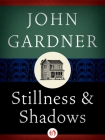Genre Other. Page - 269

Description
The Worm Ouroboros is considered to be one of the foundational texts of the high fantasy genre, influencing later authors like J. R. R. Tolkien, C. S. Lewis, Ursula K. Leguin, and James Branch Cabell. It is most frequently compared to The Lord of the Rings in its epic scope set against a medieval, magic-laced backdrop—a world called “Middle Earth” by Eddison, thirty-two years before Tolkien’s—and in its almost mythical portrayal of larger-than-life heroes and villains.
The plot begins simply enough: The Lords of Demonland, a group of heroic warriors enjoying a strained peace, are called upon by an emissary of the warlock king of Witchland, Gorice XI. The emissary demands that Demonland submit to the King of Witchland—but the proud Demons refuse, setting off an epic war that spans their entire world. The heroic struggles of the Demons and their allies against the Witches reflect the circular nature of human history: the snake eating its own tail of the title.
The novel is written in a purposefully archaic, almost Jacobean style. The rich, surprising vocabulary and unusual spelling are testaments to Eddison’s expertise at reading and translating medieval-era texts. To this day, it remains perhaps unique in fantasy literature in the accuracy and precision of its highly affected prose style, perhaps matched only by the out-of-time strangeness of the prose in Hodgson’s The Night Land. But where critics often find The Night Land’s prose obtuse and difficult, they have nothing but praise for Eddison’s beautiful, quotable style.
Eddison had already imagined the story and its heroes as a child, and drawings he made as a youth of events in the book are preserved in the Bodleian library. While the novel is without a doubt the work of a mature and skilled writer, and while some of the events and characters are portrayed differently in the novel than they were in his youthful sketches, the names of many of the characters and places remain unchanged. Some of his contemporaries, like Tolkien, wondered about the strange naming style; others criticized it as taking away from the more serious subject matter.
The Worm Ouroboros remains one of the most influential works in the high fantasy genre to this day, and traces of the foundation it laid can be still be found in genre books a century after its publication.

Description
An American composer, George Bevan, falls in love with a mysterious young lady who takes refuge in his taxicab one day. He tracks her down to an English country manor, where a case of mistaken identity leads to all manner of comedy and excitement.
The novel was first serialized in The Saturday Evening Post in 1919. It was later adapted into a silent film, a stage play, and a musical starring Fred Astaire.

Description
Dangerous Liaisons (Les Liaisons dangereuses) is an early French novel by Pierre Choderlos de Laclos, first published in four volumes in 1782. At the time of its publication novels were a new literary form, and Laclos chose to present his story in an epistolary style, composing the novel solely of a series of letters written by the major characters to each other. It was first translated into English in 1812 and has since become universally regarded as one the most significant early French novels.
The story is framed around the Marquise de Merteuil and the Vicomte de Valmont, two narcissistic French aristocrats and rivals who enjoy games of seduction and manipulation, and who most especially enjoy one-upping each other. The letters they send to each other portray an interconnected web of seduction, revenge, and malice, and are interspersed with the more innocent letters of their victims.
Dangerous Liaisons has often been seen as a depiction of the corruption and depravity of the French nobility shortly before the French Revolution, thereby making a negative statement about the Ancien Régime. But it’s also a depiction of the timeless problems surrounding sex and love, and a realistic portrayal of desires that are often beyond our control. As Laclos enjoyed the patronage of Louis Philippe II, the Duke of Orléans, and as other royalist and conservative figures like Queen Marie Antoinette enjoyed the book, it’s likely it wasn’t seen as a morality tale until after the French Revolution.






